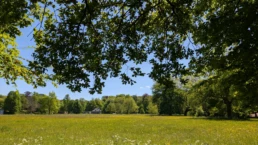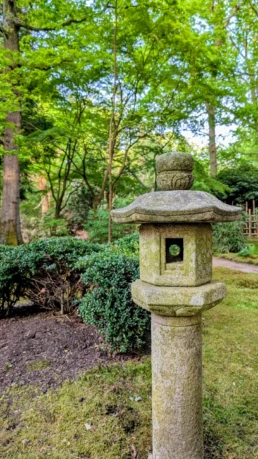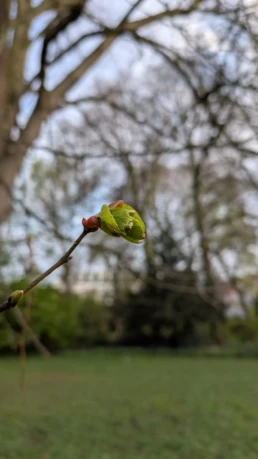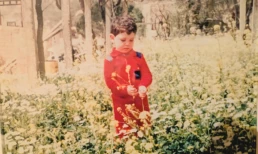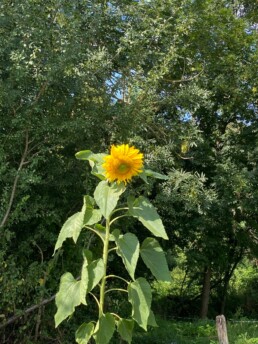Living in Peace: How to Find Inner Peace in this World
Living in Peace: How to Find Inner Peace in this World
We usually say to people when they die, Rest in Peace but what if we can live in peace too? What if there is another way of how we have been living all our lives chasing success, running after relationships, attachment to what doesn’t serve us, conflicts with those around us and becoming addicted to pain… What if, there is a different way to lead our lives? I struggle to believe that this is the only way and so, I embark on this discovery in this blog post on how can we be living in peace.
From the first instance, what comes to mind is that, to live in peace in my life, I must find that peace within me. But, this is so very abstract. How can I find that peace within me, if everything around me is so triggering? The impulses, the loud people on the streets, the aggression I see in the world… The below average financial class is going further down, while the rich become richer and the middle class shrinking even further… What peace can I achieve in this world within myself!
Peace Movement, internal or external? Or Maybe both!
Peace. I miss seeing that Peace Movement from the 1960s that was smeared with Hippie, drugs and sex in a way to diminish its truest need, to find peace externally beyond ourselves. But as I explored further, I came to realize that we must start somewhere else, or even better, the Peace Movement might need to go in conjunction internally and externally to achieve living in peace holistically.
For Peace to be True, Hate has no Home in a Peace Process!
Hate, has no place in a Peace Movement. Surprisingly enough (and maybe not), I read somewhere, that humans are the only living beings who are capable of self-hate and therefore, I say, hate for others. If a peace movement is to be successful, we cannot, have a grain of hate towards the aggressors, otherwise, we would follow the same pattern as politicians, ‘we create wars to establish peace’ which, has never worked – historically.
And coming back home, our inner home.
Let’s come back to a smaller scope, ourselves. What if, we could start bringing peace to our inner world? And maybe, there might be a way that has helped me, that might help you, too. The thing with humans, that we think we are so different from one another (in a sense we are from an experience standpoint) that what works for me, might not work for you – without even trying (and the other way around).
How can I be living in peace within my inner world, while advocating for peace in my outer world? The how, seems to be always the problem. How do we do that? Here is what worked for me:
Journaling with a goal to understand myself better:
I have journaled since I was twelve years old. I found out lately that journaling helps me identify my struggles, my pains and what keeps my inner world at unrest. It’s a way to self-reflect on my behaviors, my thoughts, my feelings and emotions, and those of others and how they impact me. I question ‘hey, Ashraf, how come this makes you feel this way? Where is it coming from?’ and I allow everything, every thought to come out without judgements or restrain. Things unfold. I learn about what triggers me, what takes and gives me energy and what kind of people I want in my life. I also work, through my journaling on important topics, topics which has caused me great pain in the past, and current ones in the present with a sole goal, to understand myself better – not to blame, shame or judge myself or others. Journaling might help you. It might open doors that you had thought they are not yours to open…
Spending time alone
Realizing that aloneness is not loneliness was key for me and it’s still sometimes a challenge. In aloneness, I’ve found togetherness. Togetherness with the most beautiful parts of my life, my experiences, and the painful parts too. And this was confronting. But, I got the space, the time, to look at the painful parts and embrace them. Through the pain, I’ve become the person I am today. Without this pain, I could be someone completely different. Through this, I found some liberation, and learned how I can be kinder to myself, kinder to those around and how to set boundaries, without building up walls – with love, kindness and care. Try spending time alone, your mind might go in all directions at first, mine did, but you learn to listen with love, not panic.
Healing my Inner Child
We’ve all gone through childhood. Some of us have had brilliant childhoods and some have not. Looking at my inner child, the pain that has been lingering there waiting for someone to acknowledge it, embrace it, love it, and bring peace to it… I couldn’t but look at my inner child in the eye and cry for weeks, months… With a phrase or two which resonate with my experience. Find that for yourself and embrace that helpless child who life happened to. Cry. Scream. Let it out.
Connect with People
Throughout my life, I have walked on the street with a ‘long face’, thinking that people are horrible beings filled with judgements and opinions… Well, I came to realize I am a person. I make a portion of these people, so why not change someone else’s experience. Connecting isn’t necessarily with words. A smile to a stranger on the street makes my day. It makes it even better if I get a smile back but that’s unnecessary. A gesture or a question if the old lady at the supermarket needs help carrying her groceries… With the intention to help, to show love, to connect with kindness – not a hook up 🙂 ! And also, connect with friends and people that you can have meaningful deep connection with. And learn to listen carefully.
Practicing Mindfulness
For me, practicing mindfulness has been the main tool in discovering my inner world. Some people think mindfulness is sitting and kicking out all the thoughts from the mind. On the contrary, mindfulness is always mindfulness of something. I focus on my breath, my feelings, emotions, lingering thoughts, body and I investigate during my mindfulness sessions the essence and the source of whatever comes up. Sometimes, things unfold during or after several sessions focusing on one thing, and that’s when I also use my journal. I use the Plum Village Free App for mindfulness most of the time. And sometimes, I sit in silence applying my learnings.
What does living in peace look like?
When we discover the source of our unrest, we can change the unrest to rest. It’s as simple as that. The source is never external, then it becomes blame. But, sometimes, external factors can be your source of unrest if you have truly and genuinely untangled your knots… Applying these tools, I learned how to discover the source of my unrest, and you can do that too, if you try and give it your 100%.
Once we discover the source of unrest, we can then start to untangle the inner knots. When the inner knots are smoothened, the outer knots seem almost obsolete. Obsolete in the sense of, they will cause much pain to detach from them, but, you know deeply that it is essential. That knowing, is unquestionable and you feel it in every cell in your body.
Sometimes, you have to let people go from your life, work, or even relationships. It is painful, it cuts too deep, yet, essential for yours and others wellbeing and growth.
Living in peace might look like you’ve grown through your pain, your experiences and sprout out a little green stem with some leaves. You’re aware of your shortcomings, your pain, trauma and embrace them and bring love to them, and you bring a smile of kindness to it. You’ve made peace with the world around you, with those who hurt you, because that hurt, is mended, and you find understanding of the hurt, and the actions from others while keeping your boundaries with kindness and love. And in time, that sprout, grows to a small tree and roots in the ground magnificently.
Living in Peace
After great contemplation, I have found that the only way to achieve real peace the kind of peace that humanity has not achieved yet, is by finding peace within ourselves and this might be the main reason why we haven’t achieved it yet. How could have we achieved it while we struggle daily with our unconscious traumas, triggers and inflict harm and create suffering to one another physically, mentally and emotionally?
From here, finding this peaceful island within ourselves might be the first step in the direction of finding external peace in the world. Going to that island and visiting often to dwell in peace can help us in our journey to better our human connections, bring kindness and love to it and create circles of kind human connections among ourselves and the rest, it will follow.
I wish you peace I wish you love I wish you kindness
Check out my other blogs and external links:
How to Transform Self-Sabotage with Mindfulness and Love? On this link.
Why We Mend Our Wounds, Not Heal Them (Yet)? On this link.
Is Awareness the Same as Freedom? On this link.
Feeling Overwhelmed by Personal Growth? On this link.
Learn more about healing your inner child On this link.
External Resources:
Zen & Engaged Buddhism:
How to Transform Self-Sabotage with Mindfulness and Love
How Do We Transform Our Self-Sabotage?
We carry an inherent wisdom within us. Deep down, we know what’s best for us. We often know exactly what we must do to achieve what we want in life. Sometimes, we even know the path—and the means to walk it.
Yet somehow, we still don’t take the first step.
So… how do we transform our self-sabotage?
Self-Sabotage Is a Trickster
Let’s be clear: I don’t believe self-sabotage is some external force we can blame for everything—just like some people tend to externalize the ego.
Self-sabotage is part of us.
And unless we shine a light on our behaviors, it remains a shadow—hindering our happiness, freedom, or whatever it is we seek.
It shifts shapes and forms.
It adapts.
Your self-sabotage might look one way at work… another with your parents… and yet another in your relationship.
But at its core, what does self-sabotage need most to transform?
Self-Sabotage Needs Love
Have you ever noticed how most things in life—especially mental health—begin to soften when met with real, unconditional love?
There’s a saying from where I come from:
“Even rocks can cry.”
(Rocks are as alive as we are—but that’s for another day.)
The point is: anything in us that resists our true knowing, anything that works against our all-knowing nature, is a part of us that is lacking love.
Why is it lacking love?
>Because it was never given any.
>it wasn’t accepted or embraced.
>Because we never saw it as fully ours.
But when you bring love—genuine, ultimate, infinite love—to even your darkest corners… they begin to shift.
They soften.
They transform.
Mindfulness Transforms Self-Sabotage
Mindfulness is the key.
Bringing awareness to your behavior—and reflecting on it with compassion—can help you see the ways in which you hold yourself back.
Whether it’s blocking your own joy, delaying liberation, or avoiding completing a simple task…
There’s often something deeper beneath it.
Many past experiences plant the seeds of self-sabotage:
“I’m not good enough.”
“I don’t deserve this.”
“This is too good for me.”
“This is too bad for me.”
Where do those thoughts come from?
And how can you bring love to the moment in your life when they were formed?
Was it the little you?
The child you?
The teenager?
The young adult?
Maybe… the present you?
Mindfulness and self-reflection—when practiced with love and kindness—can reprogram your inner world.
You shift your self-talk.
You rewrite the script.
And with time, you begin to see your life in a brighter, softer light.
I wish you lightness.
I wish you joy.
And I wish you happiness.
Other Reads:
Why We Mend Our Wounds, Not Heal Them (Yet)? On this link.
Is Awareness the Same as Freedom? On this link.
Feeling Overwhelmed by Personal Growth? On this link.
Learn more about healing your inner child On this link.
External Resources:
Zen & Engaged Buddhism:
Emotional Identity and Pain: Who Are You Without the Struggle?
Emotional Identity and Pain: Who Are You Without the Struggle?
Over the years, I’ve noticed a quiet, unsettling question echoing beneath many of our experiences:“Who am I without the struggle?”
Pain—especially emotional pain—can become a defining presence in our lives. It becomes woven into our reactions, our patterns, our self-image. When we feel hurt, we soothe. When we fall into familiar wounds, we recover—only to repeat. We carry these patterns so long they start to feel like personality traits. But is that really who we are?
This post is an invitation to reflect:What happens when pain isn’t at the center of our identity?And what might it mean to let it go?
Repeating Patterns and Unseen Loops
One of the main reasons we find ourselves in the same painful situations is because we keep repeating the same behavioral patterns. Often, we’re not even aware of them.
And so, we ask:“Why does this keep happening to me?”
But the truth is—it’s not really happening to you. You’re a direct contributor to whatever’s unfolding in your life. Your reactions, your defense mechanisms, your inner narratives—they all play a role.
When the Pain Stops… Then What?
Now imagine this:The pain stops.The familiar emotional storm passes.The usual triggers lose their charge.
What now?Who are you when the “happening” stops happening?
This moment—of silence, of stillness—can feel almost disorienting. Because for so long, the struggle has given us identity, purpose, or simply something to manage. Pain, however unwelcome, has become familiar.
When Pain Becomes Part of Your Identity
We often build a deep association with emotional pain. It becomes part of our rhythm. A loop.
We feel it.We recover.We return to it.
Why?Because it’s familiar. Because it has shaped us. Because, on some level, we’ve come to believe it defines us.
And here’s the hard truth:We don’t always know who we are without pain.
Your Emotional Identity is not your Pain
But here’s what’s also true:You can be pain-free.
Not because life becomes perfect.But because you begin to dis-identify from the pain.
Your identity is not the pain.The pain is a collection of experiences.It shaped your perception, yes.But it doesn’t define your essence.
You are still you—capable, worthy, whole—even when the pain fades.
Other Reads:
Why We Mend Our Wounds, Not Heal Them (Yet)? On this link.
Is Awareness the Same as Freedom? On this link.
Feeling Overwhelmed by Personal Growth? On this link.
Learn more about healing your inner child On this link.
External Resources:
Zen & Engaged Buddhism:
Why We Mend Our Wounds, Not Heal Them (Yet)
Why We Mend Our Emotional Wounds (Before We Heal Them)
Over the years, I was under the impression—through what I heard, learned, and hoped—that eventually I would heal from my traumas. That one day, I’d be free from the emotional weight of the experiences that shaped me, especially the difficult ones: Mending emotional wounds.
But lately, something has shifted in my understanding.
I’m realizing I haven’t exactly healed…
What I’ve done is mend.
I’ve tended to the wounds—not erased them.
Healing, I now see, isn’t about forgetting what happened or suddenly feeling "fixed." It's not like a headache you treat with a pill and then forget it existed. Emotional wounds, especially the ones we carry from early life, go deeper than that.
Mending Emotional Wounds: A Practice of Returning to Ourselves
Some wounds go so deep, they become part of how we see the world—and ourselves. And while we can learn to soothe them, care for them, and understand where they come from, they may reopen. Sometimes at the smallest trigger. Sometimes when we least expect it.
Mending doesn’t mean the pain is gone forever. It means we are learning how to tend to the pain with more care, more awareness, and more compassion than we did before.
Over time, these wounds may scar. And those scars can be gentle reminders of where we’ve been—and how far we’ve come.
And maybe—just maybe—within this lifetime, some of those wounds will heal. Maybe the scar fades. Maybe it doesn’t. But we move forward anyway.
Healing Isn’t Instant—and It Isn’t Linear
I want to avoid misguidance.
There is no quick fix.
We don’t “heal” overnight—or even after one coaching journey, therapy session, or moment of clarity.
True healing begins with this simple and powerful truth:
Acknowledging the wound is the beginning—not the end.
It starts with awareness—realizing there’s something within us that still aches.
That ache might show up in our relationships, our work, our sense of self, or how we treat the ones we love.
From there, we begin to ask:
How do I stop the bleeding?
Where did it come from?
And slowly, gently, we begin to apply pressure. We start caring for what hurts. We begin mending.
Sometimes, the wound opens again.
Sometimes, it doesn’t.
But with intention and honesty, we begin to grow from it.
Healing Is the Final Stage—Not the First
Healing isn’t the first step.
It is the result of years of tending.
And in many ways, it might take a lifetime.
But every time we sit with our wounds instead of running from them…
Every time we hold space for what hurts instead of numbing it…
Every time we meet ourselves with compassion instead of shame…
We take a step closer.
You don’t have to be fully healed to live a meaningful life.
But by mending your wounds with care and presence—you might find that you are living more fully than ever before.
Other Reads:
Is Awareness the Same as Freedom this link.
Feeling Overwhelmed by Personal Growth? on this link.
Learn more about healing your inner child on this link.
External Resources:
Zen & Engaged Buddhism:
Is Awareness the Same as Freedom?
Awareness and freedom
Becoming aware isn’t the same as becoming free.
After years of reflecting on mindfulness, I’ve come to question something we often assume: that awareness automatically leads to freedom.
But… does it?
If awareness is the key, what exactly are we becoming aware of?
And if freedom is the outcome, what are we being freed from?
These aren’t just abstract ideas for me—they’ve been real, lived questions.
And over time, I’ve started to see that awareness is not some detached state.
It is always awareness of something.
This insight is one I’ve learned through the teachings of Thich Nhat Hanh and the Plum Village tradition of Buddhism—a path (Buddhism) I’ve been walking for over a decade. And it has stayed with me:
Awareness is always awareness of something.
So it follows:
Freedom is always freedom from something.
What do you want to become aware of and free from?
For me, it was the long-standing impact of being bullied.
If you’ve read the About Me section, you know this experience shaped much of my early self-image. Over the years, I developed defense mechanisms to protect myself—mechanisms that, at some point, stopped serving me.
When I began to look deeply, I could see how this past was still present: in my thoughts, my relationships, and my patterns.
And that’s where awareness became something more than observation—it became a doorway.
A doorway to understanding.
To healing.
To freedom.
What do you want to be free from?
I want to be free from the unconscious protections that were once necessary but are no longer true to who I am today.
I want to live a lighter life.
One not defined by the past, but informed by it.
A life that doesn’t project old wounds onto people I love.
Because by freeing myself…
I free others too.
A question for you:
What is it that you want to become aware of?
What do you want to be free from?
Not in a grand, life-changing way.
But maybe just in this moment, right now.
Bring a little compassion to it.
Let the answers come when they’re ready.
Other Reads:
Here’s more about mindfulness on this link.
Learn more about healing your inner child on this link.
External Resources:
Zen & Engaged Buddhism:
Feeling Overwhelmed by Personal Growth? Here’s What Helped Me
Feeling Overwhelmed by Personal Growth?
The feeling of being overwhelmed by personal growth is common. I’ve experienced it myself—the internal questions like:
“When will I stop feeling like this?”
“When will I finally get better?”
“I’m 36 and I still can’t get a grip on my thoughts when they take over.”
That inner urgency to feel better, especially in darker moments, can be counterproductive. It can make us feel more broken, more behind, more stuck. But there’s something that’s helped me...
The Wisdom of Impermanence
Over 3,000 years ago, a wise teacher said: “Everything is impermanent.”
That includes our thoughts, our emotions, our anxiety—and even our very sense of self as we know it. This simple but profound truth has helped me become a little gentler with myself.
It reminds me that my feelings, no matter how overwhelming, are part of a passing moment. They are real—but they are not permanent.
Being with What Is
Knowing this doesn’t make intense feelings go away. It doesn’t make intrusive thoughts less persistent. But it has changed how I relate to them.
When I’m anxious and overwhelmed, I ask myself: What good will it do to resist what’s already here? To fight the anxiety with more tension? Or to distract myself until I can’t feel anything at all?
Instead, I try to stay present. To acknowledge what’s here with as much gentleness as I can. I try not to flee, but to embrace the moment—because that’s how love and healing begin.
Let It Rain
If it rains, let it rain. Pain can bring growth. From the rainfall, buds eventually sprout. And from pain, wisdom can emerge.
This isn’t about glorifying suffering—it’s about trusting that something meaningful can arise when we allow space for what’s truly present.
You already have the answers. The path is within you. What you need most is space, trust, and patience to hear it.
What Helps Me—and Might Help You
Next time you’re in a low moment, try this:
- Sit with your feelings. Let them be exactly as they are.
- Remind yourself: there’s nothing wrong with you.
- Take time off if you need to—cancel the plans, step back from work, create quiet.
- Avoid big decisions. Let clarity come naturally, not under pressure.
- Create a small, gentle routine: for me, it’s washing my face, brushing my teeth, doing yoga (10–45 minutes), and drinking warm water in the morning.
- Journal. It helps me reflect, understand, and check in with what’s really going on.
- After a few days—open the curtains. Let the sun in. Others in. Let yourself come back.
Sometimes the insight comes during the cocooning. Sometimes, it comes after. Either way, it always comes.
Final Thoughts
You are not alone in this. If you're feeling overwhelmed by your personal growth journey, know that it's okay to pause. It's okay to feel. And it’s more than okay to give yourself grace.
You are growing—even when it doesn’t feel like it. Especially then.
Other Reads:
Learn more about my offerings on this link.
Here’s more about mindfulness on this link.
Learn more about healing your inner child on this link.
External Resources:
Zen & Engaged Buddhism:
Healing Starts by Taking Responsibility for Our Inner World
Inner child healing through self-awareness
One of the most profound and difficult truths I’ve encountered on my personal development journey is this: I am responsible for the feelings I carried since childhood—and the belief systems they unconsciously created. These early emotional experiences shaped the lens through which I view myself and the world today. Inner child healing through self-awareness.
Understanding Where It Begins
As children, we’re naturally vulnerable. Our emotional worlds are shaped by interactions with parents, siblings, relatives, peers, and even teachers. When those experiences repeatedly trigger emotional pain—without support or guidance to help us understand them—we begin to internalize those feelings.
Without tools to process them, we store them. We carry them. And over time, they become beliefs:
- “I’m not good enough.”
- “I always mess things up.”
- “I’m not lovable.”
- “I need to prove my worth.”
These beliefs don’t start as thoughts. They start as emotional imprints—formed when we were too young to make sense of what we were feeling.
What Happens When These Feelings Are Left Unprocessed
As renowned physician Dr. Gabor Maté reminds us: “Trauma is not what happens to us, but what happens inside of us.”
If a child is repeatedly left alone in their pain—physically or emotionally—that aloneness becomes its own trauma. Without someone to help them make sense of what they’re feeling, they begin to believe the pain is who they are.
As adults, those unprocessed emotions can manifest as patterns:
- Self-sabotage
- Negative self-talk
- Difficulty trusting others
- Fear of intimacy or rejection
These patterns aren’t flaws. They’re adaptations. They were once protective. But now, they may be holding us back.
You are not broken. You are mending your wounds. They will leave scars and hurt at times! And that process begins the moment you choose to listen inward, with love.
Taking Responsibility Is Not the Same as Self-Blame
One of the turning points in my journey was learning to stop blaming others—and also, to stop blaming myself.
Instead, I chose responsibility. I went back to my younger selves: the five-year-old, the teenager… the version of me that didn’t know what to do with his feelings. And I met him with love.
I forgave him. Held him. & Said: “You didn’t know what to do. And that’s okay.”
Taking back responsibility meant letting go of the weight I placed on others—my parents, my teachers, the bullies, the world—and returning to myself. It didn’t erase the pain, but it gave me back the power to heal.
You Can Begin This Work Too
Healing begins when we stop waiting for others to fix what they didn’t know how to hold in the first place.
You can start by:
- Acknowledging the beliefs you carry that no longer serve you
- Connecting with the younger version of yourself with kindness
- Practicing self-compassion when triggers arise
- Seeking support when needed—because healing doesn’t mean doing it all alone
If this reflection resonates with you, take a moment to sit with it. Breathe. Listen. Your healing doesn’t require perfection—only presence.
Let this be your gentle reminder: You can return to yourself. One breath at a time.
Other Reads:
Learn more about my offerings on this link.
Here is more about mindfulness on this link.
Learn more about healing your inner child on this link.
External Resources:
Zen & Engaged Buddhism:
Why Having a Personal Mentor Can Shift Your Life
Why Have a Personal Mentor?
Benefits of having a personal mentor for growth and clarity
Growing up, I often wished for someone who could simply guide me.
Someone to ask the right questions, offer a new perspective, or help me feel less alone when I was stuck.
In my twenties, I had very little direction. My parents wanted me to study and get a diploma—and for that, I’m grateful.
But what happens after the diploma?
How do you build a career, make decisions, or even learn how to be an adult?
Over the years, mentors came and went.
Some were professors. Others were managers.
Some challenged me deeply—so much that I resisted them. But they all taught me something. They helped me grow emotionally, mentally, professionally, and spiritually.
What Does a Personal Mentor Offer?
A mentor gives you perspective—an ability to view your situation from another angle.
They can guide you through uncertainty, ask questions that shift your thinking, or share their experience in moments when you're unsure.
A mentor doesn’t give you answers.
They hold space for your process and walk beside you as you find your own.
In moments when you’re doubting your decisions, facing a transition, or simply overwhelmed—a mentor can make the path clearer.
What Makes a Mentoring Relationship Work?
A mentoring relationship is built like a triangle:
Two people, one connection, meeting at a common point of trust and intention.
It only works when both sides show up fully.
You don’t need someone who just makes you feel comfortable.
You need someone who challenges you, understands you, and is curious about your growth.
Look for someone who gets you—not perfectly, but authentically. Someone who can be vulnerable, open, and supportive.
Once you find that connection, invest in it.
It can shift your life in meaningful ways.
And these were the benefits of having a personal mentor for growth and clarity! I hope you enjoyed reading this blog.
Looking for a Mentor?
Take your time.
Try different conversations.
Feel your way into the connection.
And when you know—you’ll know.
You might be interested in these reads and links:
Learn more about my offerings on this link.
Here is more about mindfulness on this link.
Learn more about healing your inner child on this link.
External Resources:
Zen & Engaged Buddhism:
What Is Mindfulness—And Why Does It Matter for Your Wellbeing?
What Is Mindfulness?
Benefits of mindfulness for mental and physical health
Mindfulness means becoming aware.
It’s that simple—and that profound.
But awareness of what?
That part is up to you.
Think of mindfulness like a flashlight you carry in your pocket. At any moment, you can choose to take it out and shine it somewhere. Wherever the light lands, things become visible—and from visibility, clarity begins.
Mindfulness is the light.
Your breath, body, emotions, thoughts, or even a difficult relationship can be the object of mindfulness.
Without an object to focus on, mindfulness is directionless. But when we bring attention to something intentionally, we begin to soften into the present moment.
What Does It Mean to Be Mindful?
Being mindful is the act of becoming aware.
When I become aware of my breath, for example, my body slowly begins to relax. My thoughts slow down. I start noticing what I’m feeling—maybe joy, sadness, tension, or calm.
From the breath, I can expand awareness to include my posture, the state of my muscles, or the emotions that surface beneath the surface.
This is not passive observation. It’s conscious noticing.
It’s being with what is, without needing to fix it.
How Do I Practice Mindfulness?
The good news? It’s not rocket science.
Mindfulness begins with a few quiet minutes. Sit upright in a chair or on a cushion. Close your eyes if that feels comfortable. Begin noticing your breath—just as it is.
You’ll get distracted. That’s normal.
Gently return your attention to the breath.
Inhale… Exhale…
This moment becomes a pause in your day. A reset. A return to yourself.
It may seem simple—too simple, even—but over time, it becomes a powerful anchor in your life.
Why Is Mindfulness Important?
Benefits of mindfulness for mental and physical health
In a world that pulls us in all directions, mindfulness brings us home.
It helps regulate your nervous system, ease stress, clarify your thoughts, and connect you with the stillness already within you.
Whatever is happening outside—mindfulness offers a way to stay grounded, present, and well.
Other reads you might be interested in:
Learn more about my offerings on this link.
Learn more about healing your inner child on this link.
External Resources:
Zen & Engaged Buddhism:
Check-In in the Here and Now
Mindfulness reflection in times of emotional overwhelm
Hello, dear friend.
It’s been a while.
So let me ask: How are you?
Not the “I’m fine” version.
But how are you—really?
Have you felt your sadness creeping in lately?
Have you numbed it with distractions, filled the silence with noise, scrolled until your breath faded into the background?
Have you smiled for others, while forgetting to smile for yourself?
Have you questioned your worth, your place, your presence?
Have you chased something “better,” again and again, only to find yourself standing in the same spot, holding the same ache?
Have you worn your sadness for years—quietly, like a second skin?
If so, you are not alone.
And if you’ve asked yourself these questions lately, then maybe…
This is your invitation to pause.
To undress the sadness.
To sit in silence.
To meet yourself with the tenderness you’ve given others.
Breathe.
Touch your heart.
And ask again: How am I, really?
Learn more about my offerings on this link.
Learn more about mindfulness on this link.
Learn more about healing your inner child on this link.
External Resources:
Zen & Engaged Buddhism:

